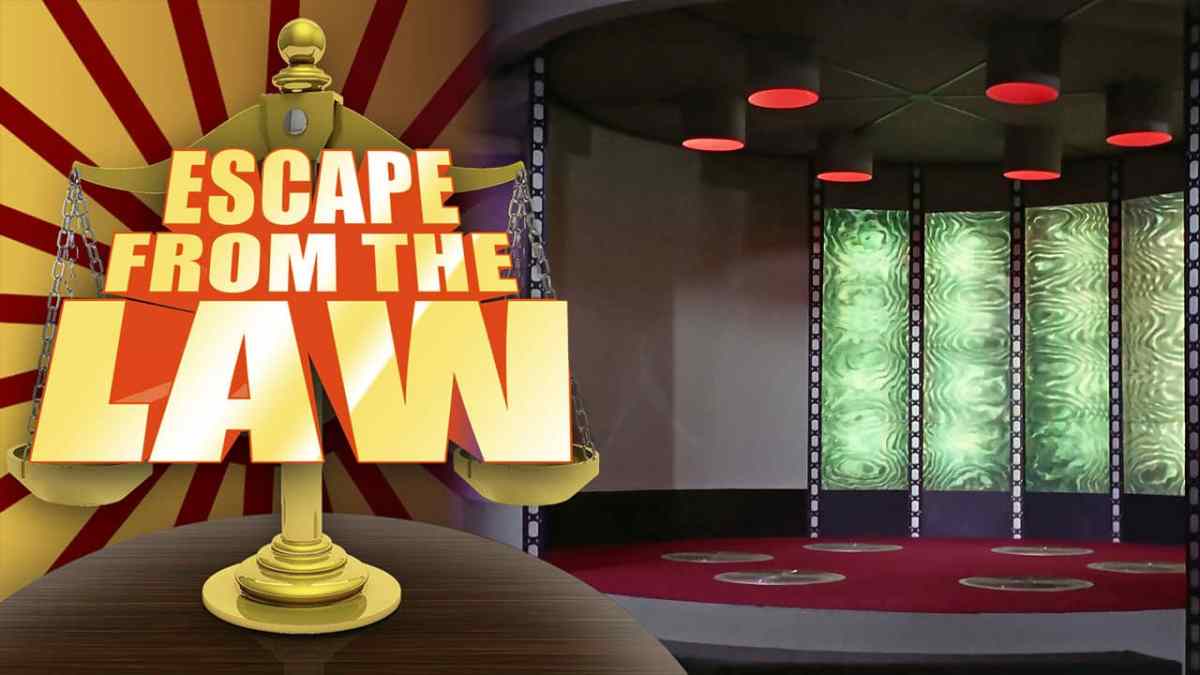One of the coolest technologies depicted on Star Trek is the transporter, which can be used to send a person tens of thousands of miles in just a few seconds. But as any good Star Trek fan knows, transporters are far from perfect. Over the years, we have seen that transporter malfunctions come in many shapes and sizes — literally. In one episode, a transporter error transforms several crewmembers into children. More broadly, transporter malfunctions have split crewmen into multiple people, combined multiple people into one person, separated crewmen’s minds from their bodies, transported people to wonky mirror dimensions, and, in the most mundane scenario of all, sent crewmen to the wrong destination. These regular malfunctions raise a bevy of legal questions about transporters, liability, and personhood.
To explore some of those questions, we can divide our inquiry into two categories: transporters working as intended and transporter malfunctions. This week, I’ll consider the first category and will determine whether someone dies when they are transported and whether a person who facilitates a transport is a murderer. Next time, I’ll consider some of the legal questions associated with transporter malfunctions.
Whether people die when they are transported is one of the most interesting questions relating to transporters. There are three dimensions to this question: technical, philosophical, and legal.

Technical
The technical dimension relates to how transporters actually work. Since the underlying technology is fictitious, I am not concerned with how the technology is actually implemented as much as I am with what purportedly happens to the transported matter. There are three possibilities. The first possibility — which we can call the “Portal Theory” — is that the transported matter is sent, as a whole, from point A to point B, without any interruption or meaningful decomposition or recomposition. In this model, transporting is just like walking through a portal.
The second possibility — which we can call the “Jigsaw Theory” — is that transported matter is broken down to the atomic level, sent through the transporter, and reassembled on the other side. This is like the Portal Theory, except that instead of an entire person going through the portal, it’s the constituent, unassembled matter that is sent. In this model, there is a brief interruption in personal continuity, as matter must be decomposed, then recomposed.
The third possibility — which we can call the “Xerox and Shred Theory” — is that the transported matter isn’t transported at all, but is instead scanned, copied, and destroyed. The transporter then sends the data pattern from point A to point B, where it is reassembled from whatever matter might be on hand at the destination. In this model, there is a permanent interruption in the matter, since the transporter is actually sending data and, in fact, destroys the underlying matter.
Unfortunately, there is not an easy way to determine which of these three theories is actually in play, since each one finds support in some episodes but is refuted in others.

Philosophical
The philosophical dimension is somewhat amorphous and turns on one’s conception of personhood. Once again, there are three theories.
The first theory — which we can call the “Body Theory” — posits that personhood is defined through physical parameters. A proponent of the Body Theory would say that a person dies when their body no longer functions. Thus, a proponent of this theory would say that a person died under the Xerox and Shred Theory, since the original body is destroyed. Likewise, a proponent would say that a person temporarily dies under the Jigsaw Theory while the transport process is underway and that a person would not die under the Portal Theory, since the body remains intact. Generally speaking, the Body Theory is not particularly popular or prominent. Most people have a conception of life that includes some component of the mind or sense of self.
The second theory — which we can call the “Mind Theory” — posits that personhood is defined through mental processes. A proponent of the Mind Theory would say that a person dies once their mind is no longer functioning. Thus, a proponent of this theory would say that a person temporarily dies under the Jigsaw Theory (since no thought processes take place when the mind is decomposed), but that a person would not die under the Portal or Xerox and Shred theories, since the subject’s mind is still functional under both of those theories. The Mind Theory is more prevalent than the Body Theory — most people can imagine having a sense of self even if their mental processes were separated from their body. This theory is explored in some detail in Amazon’s new series, Upload.
The third theory — which we can call the “Hybrid Theory” — combines the first two theories. It posits that personhood is defined by the combination of one’s body and one’s mind. A proponent of this theory would say that a person dies if their mind or body ceases to function. Thus, this theory would hold that a transported person temporarily dies under the Jigsaw Theory, dies under the Xerox and Shred Theory, and lives under the Portal Theory.

There is a fourth theory worth mentioning — a theory of consciousness. A proponent of this theory would say that personhood is defined by one’s consciousness. This theory does not shed much light on transporters, since there is no way to know whether the person who appears at point B shares the same consciousness as the person who disappeared at point A. Obviously, the person at point B thinks of themselves as the same person from point A, but subjective belief is not sufficient.
To see why, consider what happens when a transporter malfunctions and creates a perfect copy of the transportee at point B. Both people would think of themselves as the same person, but only one — the original — would be correct. Because there is no way to actually evaluate personhood under this theory, it is useless for anything other than thought experiments. Even if transporters were real, there would be no way to know whether the output consciousness is the same as the input consciousness.
Finally, it is worth noting that the various theories are not mutually exclusive. In particular, the body and mind theories often overlap, since, in most instances, the mind’s operations are carried out by the brain. Likewise, one can mix and match the theories as appropriate. For example, one could adopt a Hybrid Theory that places more weight on the mind than on the body, saying that personhood requires a body but is not defined by any particular body. Thus, a person would die if their brain were put into a computer but would be alive if their mind were transferred into a different body. While there are countless possibilities, what matters most is that each one is (or should be) driven by a conception of what it means to be a person and what distinguishes people from one another.
These and other theories are discussed in considerable detail in Stanford’s Encyclopedia of Philosophy.

Legal
Legal perspectives of personhood are rooted in the philosophical theories described above. Unfortunately, the law has not had to grapple with any of the complex questions implicated by transporter technology. Nevertheless, legal rules provide some insight into how the law views personhood. For one thing, the law has explicitly rejected the Body Theory — a person whose body is alive but whose mind is dead is legally dead.
The law is less transparent when it comes to the Mind Theory. On one hand, we can consider people with “locked-in syndrome.” Locked in syndrome is the opposite of brain death — a person with locked-in syndrome has a mind that is fully functional, but a body that is completely paralyzed. Those people have rights, and it would be illegal to kill someone with locked-in syndrome. This suggests that the law subscribes to the Mind Theory — or, at the very least, a Hybrid Theory that places considerable weight on the Mind.
On the other hand, several state laws regarding abortion and fetal homicide turn on the physical, rather than mental, development of the fetus. This suggests that the law subscribes to a Body Theory, or, at the very least, a Hybrid Theory that places considerable weight on the Body.
Admittedly, these analogies are imperfect, since we have not yet encountered a scenario in which the mind and body have been completely separable. For instance, a person with locked-in syndrome still has a body, and a fetus that lacks physical viability will also lack the ability to develop mental capacity. Nevertheless, the analogies suggest that the law is most consistent with a version of the Hybrid Theory that is weighted more heavily towards the mind than the body.

Based on the analysis above, this means that the law would have no issue with transporters (working as intended) under the Portal Theory or under the Jigsaw Theory, since transporters under those theories would not meaningfully interfere with physical or mental processes. For similar reasons, there is a strong argument to be made that the law would have no issue with the Xerox and Shred Theory. Even though the underlying matter is destroyed, the mind and its constituent mental processes remain intact.
This conclusion is further bolstered by the fact that, at its core, the law is rooted in pragmatism. It is designed to encourage good or desirable behavior and to discourage negative or undesirable behavior. Generally speaking, actions are illegal if they hurt other people (like murder), encourage activities or mindsets that are likely to hurt other people, (Scientists can experiment on animals, but animal cruelty is illegal.) or impose objective and readily apparent harm on the person taking the action. (This is why many drugs are illegal.)
Taken at face value, transporters do not meet any of those criteria. Regardless of which theory of personhood one subscribes to, there is no basis to say that transporters hurt anyone other than the transportee, the only activity potentially encouraged by transporters is more transporter use, and there is no readily apparent harm on the person transporting. (The person at point B is indistinguishable from the person at point A, and the transportee does not appear to suffer any pain or negative consequences.)
At most, one could argue that it should be illegal to transport someone without their consent. But that’s true even now — transportation without consent is the definition of kidnapping, and it is illegal regardless of if it’s by foot, car, shuttlecraft, or transporter beam.
In sum, transporters — when used as intended — do not satisfy any of the criteria that would support a conclusion that they should be illegal. While certain philosophies may maintain that transporting amounts to murder (depending on how the transporter actually works), they lack the pragmatic hook needed to turn the philosophical musing into practical law.
Come back next time for Part II, when I consider some of the legal questions associated with transporter malfunctions. There will be clones, there will be children, there will be mirror universes!






Published: Jul 19, 2020 03:00 pm